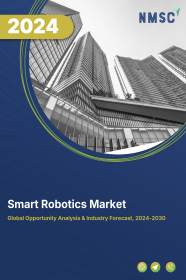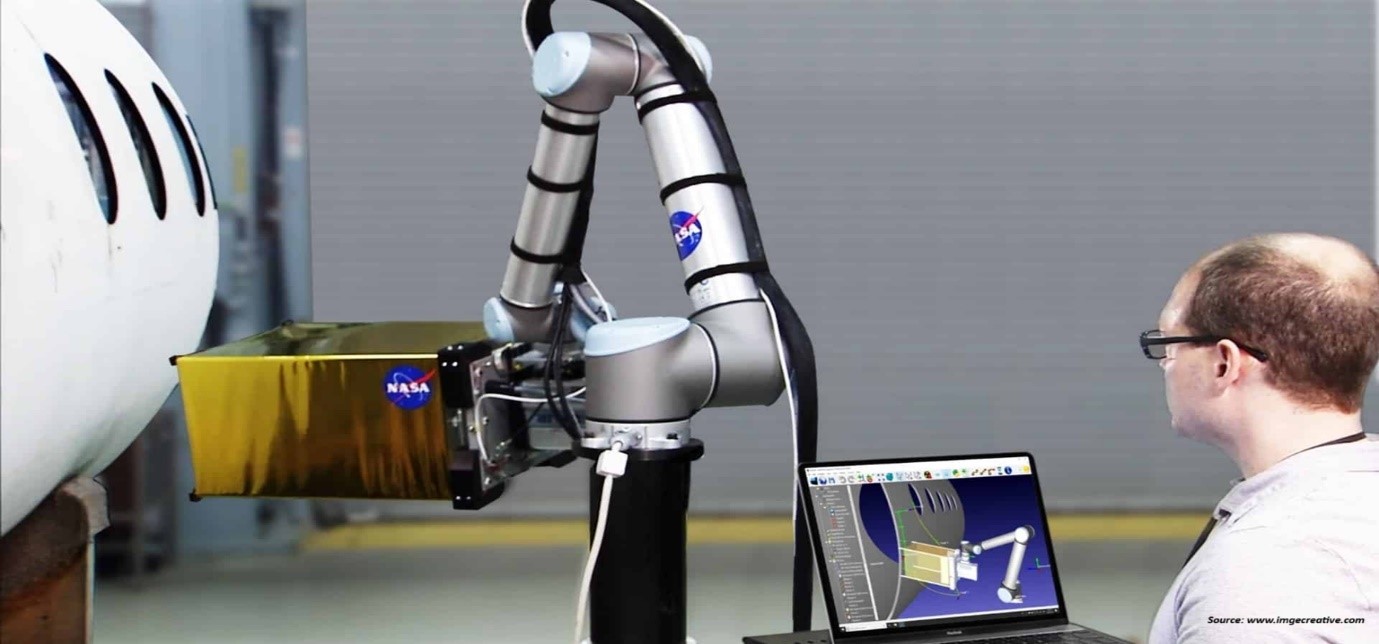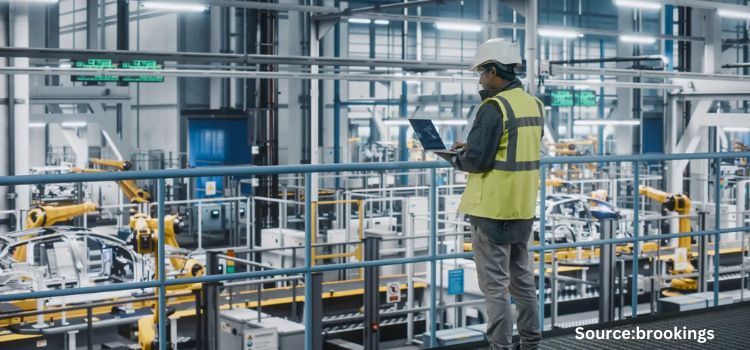
Smart Robotics Market by Type (Industrial and Service), by Component (Software and Hardware), by Mobility (Fixed and Mobile), by application (Welding & Painting, Assembling & Disassembling, Inspection, Security, and other applications), and by End Users (Automotive, Food and Beverage, Electronics, Logistics, Military and Defense, Medical and Healthcare, and other industries) - Global Opportunity Analysis and Industry Forecast 2023-2030
US Tariff Impact on Smart Robotics Market
Trump Tariffs Are Reshaping Global Business
Market Definition
The Smart Robotics Market was valued at USD 11.97 billion in 2022 and is predicted to reach USD 57.57 billion by 2030 with a CAGR of 21.8% from 2023-2030. Smart robotics are advanced robotic systems equipped with artificial intelligence (AI) and sophisticated sensors that enable them to perceive, learn, and interact intelligently with their environment. These robots can analyze sensory data, make decisions, and adapt their actions based on real-time feedback, allowing them to perform complex tasks autonomously without human intervention.
Smart robotics are designed to be highly versatile, capable of performing various functions across different industries, including manufacturing, healthcare, logistics, and service sectors. Their ability to learn from past experiences and continuously improve their performance makes them valuable tools for increasing efficiency, productivity, and safety in diverse applications.
Market Dynamics and Trends
The growing demand for automation and the implementation of Industry 4.0 practices in industries such as manufacturing, logistics, and healthcare are fueling the adoption of smart robotics market. These robots can streamline production processes, improve supply chain management, and enhance operational efficiency. According to the International Federation of Robotics (IFR), the global deployment of industrial robots surpassed 3 million units in 2022. This significant number of industrial robots in operation highlights the growing importance of automation in industries worldwide.
Also, as labor costs rise in many industries and skilled labor shortages become a challenge, companies are turning to smart robotics to fill the gaps and automate repetitive tasks, leading to cost savings and increased productivity, which in turn further fuels market growth. According to the International Labour Organization (ILO), global monthly wages fell in real terms to minus 0.9 per cent in the first half of 2022, indicating a challenging economic climate for employers.
Moreover, several governments worldwide are investing in robotics research and development, offering financial incentives, and formulating supportive policies to encourage the adoption of smart robotics in different sectors, propelling the growth of the market. For instance, in September 2021, the Ministry of State for Communications and Information Singapore introduced a new initiative aimed at promoting the adoption of robotics and automation technologies in various industries. The initiative aims to enhance productivity, efficiency, and competitiveness by supporting businesses in integrating smart robotics into their operations. This move is expected to drive the smart robotics market growth in Singapore and foster innovation in automation technologies.
However, smart robotics often require significant upfront investment due to their advanced technology and capabilities, restraining the growth of the market. On the other hand, the integration of quantum computing in smart robotics will revolutionize data processing and optimization tasks, solving complex problems at unprecedented speeds, thus it is expected to create ample growth opportunities for the market in the future.
Market Segmentations and Scope of the Study
The smart robotics market report is segmented on the basis of type, component, mobility, application, end user, and region. On the basis of type, the market is divided into industrial and service. Based on components the market is classified into software and hardware. Hardware is further subdivided into sensors, actuators, power sources, control systems, and others. On the basis of mobility, the market is divided into fixed and mobile. Based on application the market is categorized into welding & painting, assembling & disassembling, inspection, security, and other applications. Based on end user industries, the market is classified into automotive, food and beverage, electronics, logistics, military and defense, medical and healthcare, and other industries. Geographic breakdown and analysis of each of the aforesaid segments includes regions comprising of North America, Europe, Asia-Pacific, and RoW.
Geographical Analysis
Asia-Pacific holds the dominant share in the smart robotics market at present and is expected to boost the market during the forecast period. This is attributed to factors such as the increasing integration of smart roboticsics in various industries such as manufacturing, mining, and agriculture is significantly boosting the global market. For instance, in April 2023, Kilcoy Pastoral Company, an Australian meat processing company, introduced a robotic cutting saw at its abattoir. The smart robotics is designed to enhance efficiency and precision in meat processing operations, marking a significant innovation in the industry.
Also, the growing adoption of robotics in the automotive industry in the Asia Pacific region is playing a crucial role in driving the smart robotics market. Automotive manufacturers in the region are increasingly integrating smart robotics into their production facilities to perform tasks that require high precision, repetitive actions, and complex manipulations. According to the International Federation of Robotics, In the Republic of Korea, 2,867 industrial robots per 10,000 employees followed by Japan with 1,422 units per 10,000 workers were in operation in 2021. Also, in 2021, the Chinese automotive industry witnessed a rapid increase in new robot installations, almost doubling to 61,598 units. These installations accounted for 52% of the total 119,405 units installed in factories worldwide.
On the other hand, North America is expected to show a steady rise in the smart robotics market share due to the growing prevalence of government's support and investment in research and development for robotics. For instance, in February 2021, the NRI issued the new National Robotics Initiative (NRI-3.0) named "Innovations in Integration of Robotics," promoting fundamental research to enhance the integration of robots in ways that benefit people. Also, in July 2022, the Canadian government announced an investment of over USD 1 million to support the adoption of new technologies in the agricultural sector, including robot software solutions. These initiatives played a crucial role in accelerating the adoption of smart robotics in various sectors in the region.
In addition, with a strong emphasis on improving warehouse and logistics operations, e-commerce companies in the region are increasingly adopting smart robotics to boost productivity and minimize human errors, which is further fueling the growth of the market. The demand for efficient and automated solutions in the e-commerce sector has led to a significant uptake of smart robotics, making them a valuable and sought-after technology in the region. For instance, on September 2022, Amazon introduced, an automated robotic arm called 'Sparrow,' which will be utilized to handle repetitive tasks in warehouses, further boosting the demand for robot software in this industry.
Competitive Landscape
The smart robotics industry comprising of various market players such as Amazon Robotics, Blue River Technology, Boston Dynamics, Fanuc Corporation, Hanson Robotics, Kawasaki Robotics, Honda Motor Co. Ltd., iRobot Corporation, Kuka AG, UiPath, LG Electronics Inc., Nachi-Fujikoshi Corporation, Omron Corporation, Rethink Robotics, and Samsung Electronics Co. among others. These market players are adopting various joint venture strategies and planning expansion of business across various regions to maintain their dominance in the global market.
For instance, in July 2023, Omron launched latest collaborative robot equipped with a 20 kg payload capacity. This new robot is designed to support various applications, including palletizing tasks, and is expected to contribute to advancements in the smart robotics market.
Also, in February 2023, KUKA launched the latest autonomous intralogistics robot called KMP 600-S with 3D object detection, laser scanners, a payload of 1,322 pounds, and an automated guided vehicle system. The new robot is designed to optimize warehouse operations and enhance efficiency in material handling and logistics processes, contributing to the growth and innovation in the global market.
Moreover, in June 2022, Amazon launched an autonomous robot, named "Proteus." The robot is designed to navigate through homes and fulfill various tasks, showcasing Amazon's entry into the smart robotics market and its commitment to advancing automation and robotics technology.
Key Benefits
-
The report provides quantitative analysis and estimations of the smart robotics market from 2023 to 2030, which assists in identifying the prevailing market opportunities.
-
The study comprises a deep-dive analysis of the smart robotics market including the current and future trends to depict prevalent investment pockets in the market.
-
Information related to key drivers, restraints, and opportunities and their impact on the global market is provided in the report.
-
Competitive analysis of the players, along with their market share is provided in the report.
-
SWOT analysis and Porters Five Forces model is elaborated in the study.
-
Value chain analysis in the market study provides a clear picture of roles of stakeholders.
Smart Robotics Market Key Segments
By Type
-
Industrial
-
Service
By Component
-
Software
-
Hardware
-
Sensors
-
Actuators
-
Power sources
-
Control systems
-
Others
-
By Mobility
-
Fixed
-
Mobile
By Application
-
Welding & Painting
-
Assembling & Disassembling
-
Inspection
-
Security
-
Other Applications
By End User Industries
-
Automotive
-
Food and Beverage
-
Electronics
-
Logistics
-
Military and Defense
-
Medical and Healthcare
-
Others
By Region
-
North America
-
U.S.
-
Canada
-
Mexico
-
-
Europe
-
UK
-
Germany
-
France
-
Italy
-
Spain
-
Denmark
-
Netherlands
-
Finland
-
Sweden
-
Norway
-
Russia
-
Rest of Europe
-
-
Asia Pacific
-
China
-
Japan
-
India
-
South Korea
-
Australia
-
Indonesia
-
Singapore
-
Taiwan
-
Thailand
-
Rest of Asia Pacific
-
-
RoW
-
Latin America
-
Middle East
-
Africa
-
Key Market Players:
-
Amazon Robotics
-
Blue River Technology
-
Boston Dynamics
-
Fanuc Corporation
-
Hanson Robotics
-
Kawasaki Robotics
-
Honda Motor Co. Ltd.
-
iRobot Corporation
-
Kuka AG
-
UiPath
-
LG Electronics Inc.
-
Nachi-Fujikoshi Corporation
-
Omron Corporation
-
Rethink Robotics
-
Samsung Electronics Co.

















 Speak to Our Analyst
Speak to Our Analyst





















